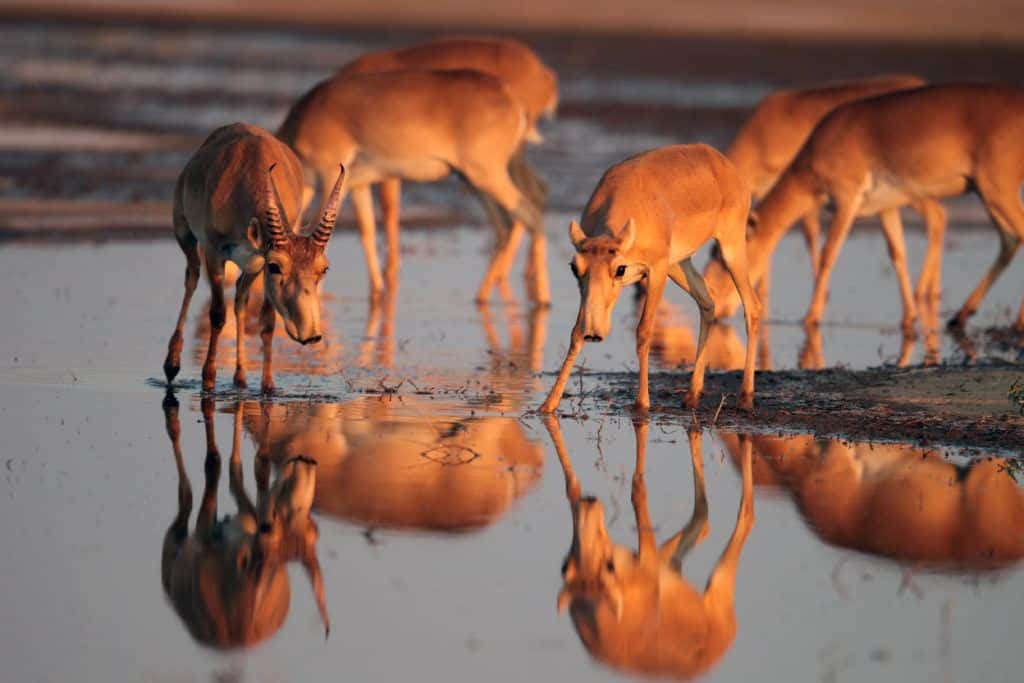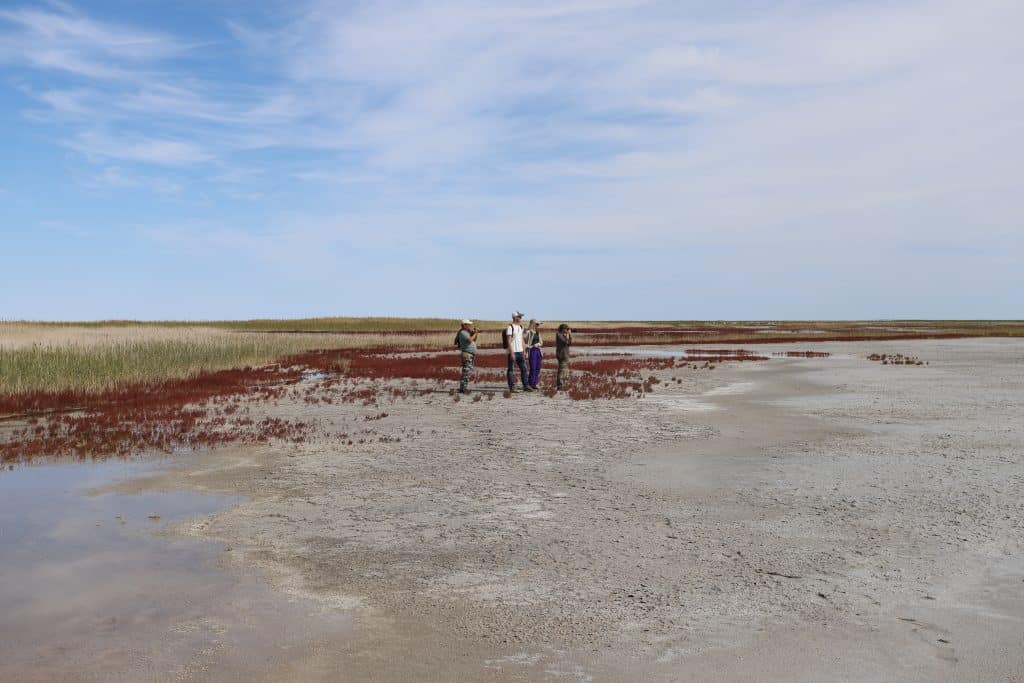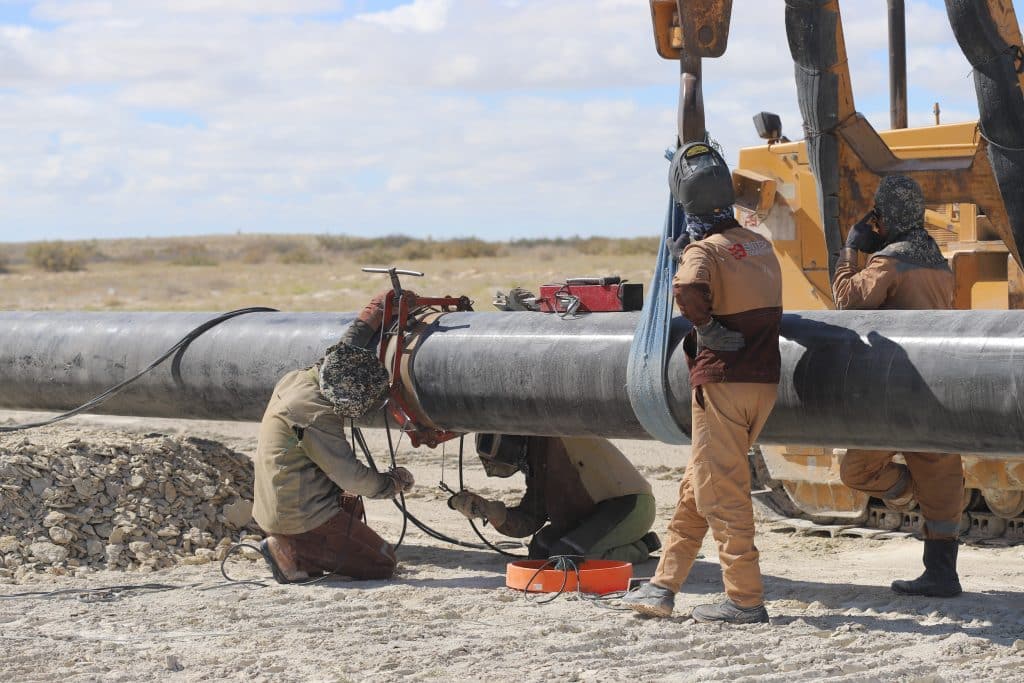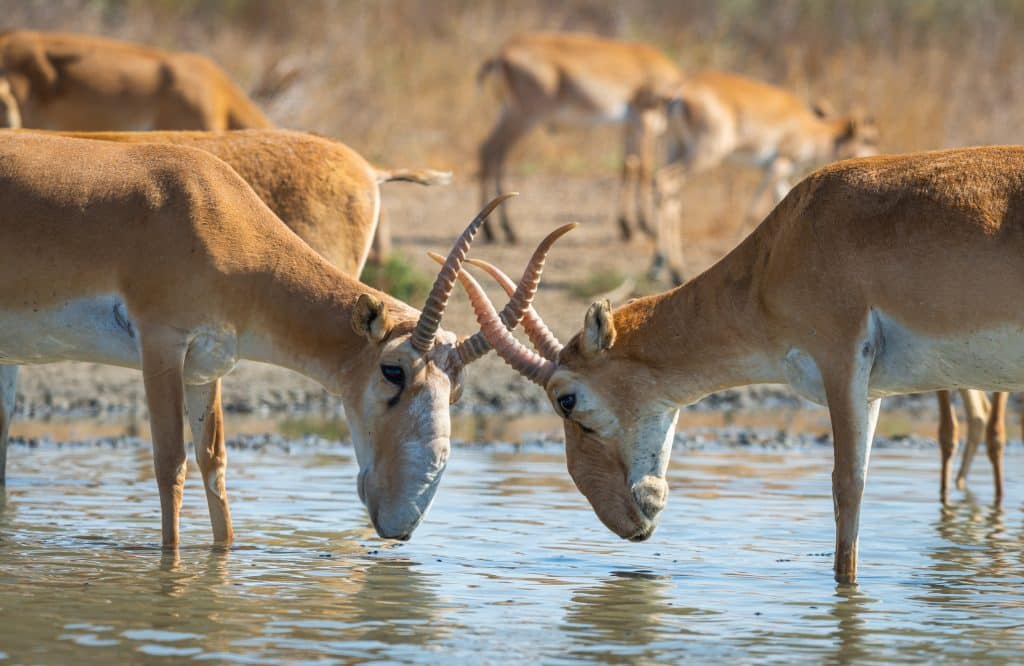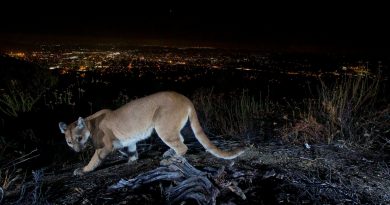Helping Saiga Thrive in Aralkum
Pale dust plumed as the Saiga Conservation Alliance (SCA) team pulled their vehicles off the main road, arriving at two artesian wells. This water source is one of the few found in what was once Uzbekistan’s Aral Sea, now a vast region of sand and salt. The team looked around, awed by the sight of hundreds of hoofprints surrounding the wells, confirmation that the region’s only herd of Critically Endangered saiga antelope was venturing closer to human-dominated areas to find water. This formerly ruined landscape has recently become the country’s newest protected area, and SCA must now ensure these desert-dwelling saiga have the resources and protection necessary to thrive.
Since 2016, SCA has spearheaded ecological surveys of the former Aral Sea and fought for its protected status as vital saiga habitat. In March 2022, Uzbekistan’s government designated the region—covering nearly 2.5 million acres—as Aralkum National Park. Although this represented a tremendous win for saiga conservation, no borders or management plan were established for the new park. Seeing there was still much work to be done, SCA took charge of making Aralkum a reality.
SCA’s first step was using past and current survey data to map out key biodiversity areas, water sources, and human activity in Aralkum, creating a park zoning map for the government that prevents commercial development near saiga and other wildlife. There are lingering mining and natural gas extraction projects occurring in parts of Aralkum, which will remain for several more years—SCA’s map confines these operations to specific zones, prohibiting their expansion into the core zone, where most wildlife is found. SCA is also training members of local communities as park staff, teaching them how to monitor wildlife. A stable population of about 200 saiga lives within Aralkum’s core zone, mostly around “Resurrection Island,” a land mass near the Uzbekistan-Kazakhstan border. But this former island is located deep in the desert, where little water is found.
Most water sources are in Aralkum’s industrial zone for human workers. The two artesian wells—located near the main road—are the closest to Resurrection Island, meaning the saiga must travel far from the core zone out of necessity and tolerate being near high human activity. SCA regularly speaks with these companies to ensure their staff do not disturb any saiga that come searching for water. Once these industrial projects conclude, the wells will be free of human disruptions and the whole park will become more hospitable for the saiga, hopefully leading to steady population growth. In the meantime, SCA is investigating where they can add more artificial water sources across Aralkum, particularly closer to Resurrection Island. SCA also plans to strengthen its collaboration with conservation groups in Kazakhstan, as the saiga migrate between both countries. Increased transboundary coordination can lead to the establishment of more wildlife corridors to connect protected areas that house saiga.
The founding of Aralkum National Park, and the continued dedication of SCA, furthers the restoration of this once desolate wasteland and secures it as an important protected area for saiga and countless steppe wildlife.


